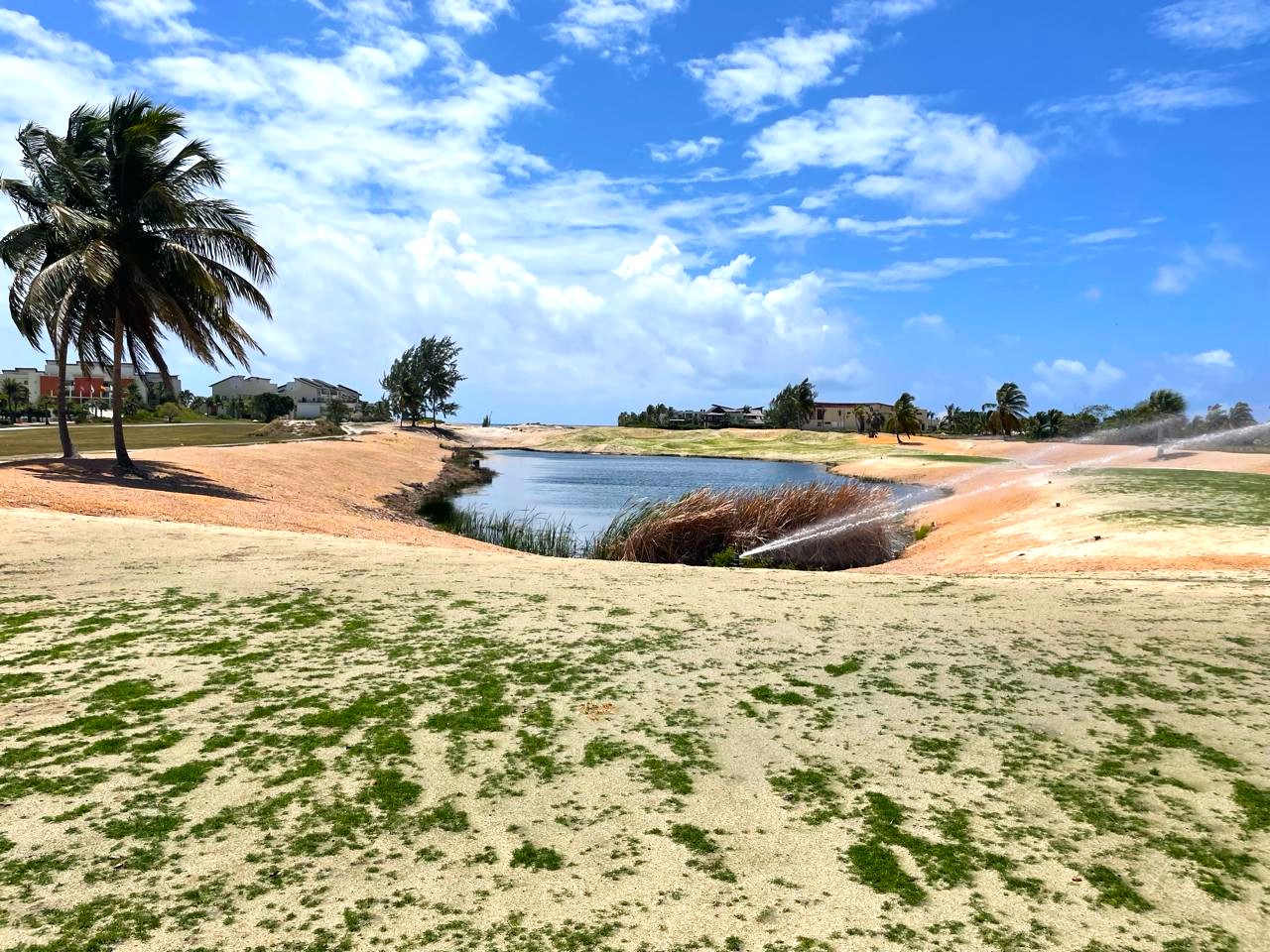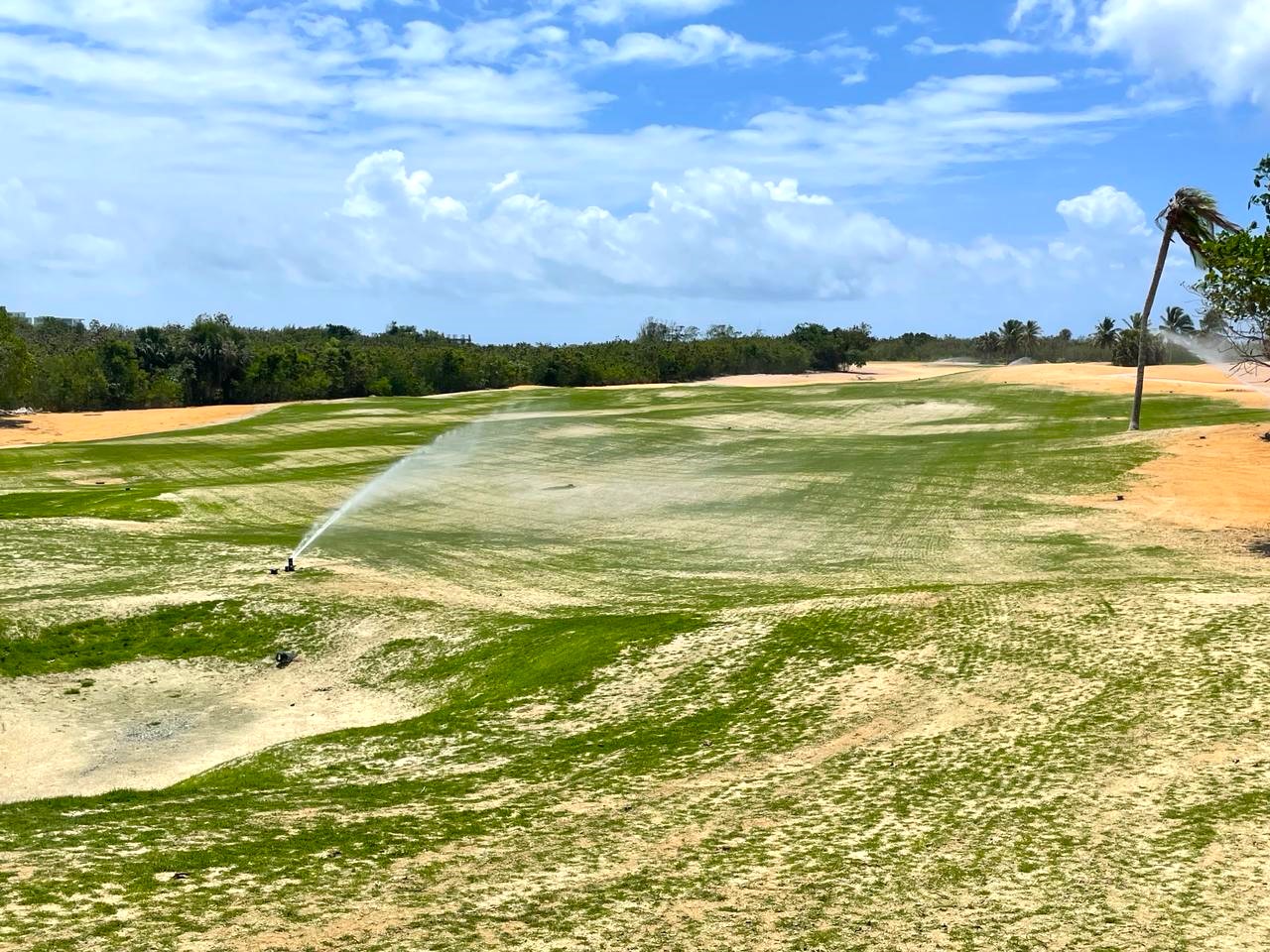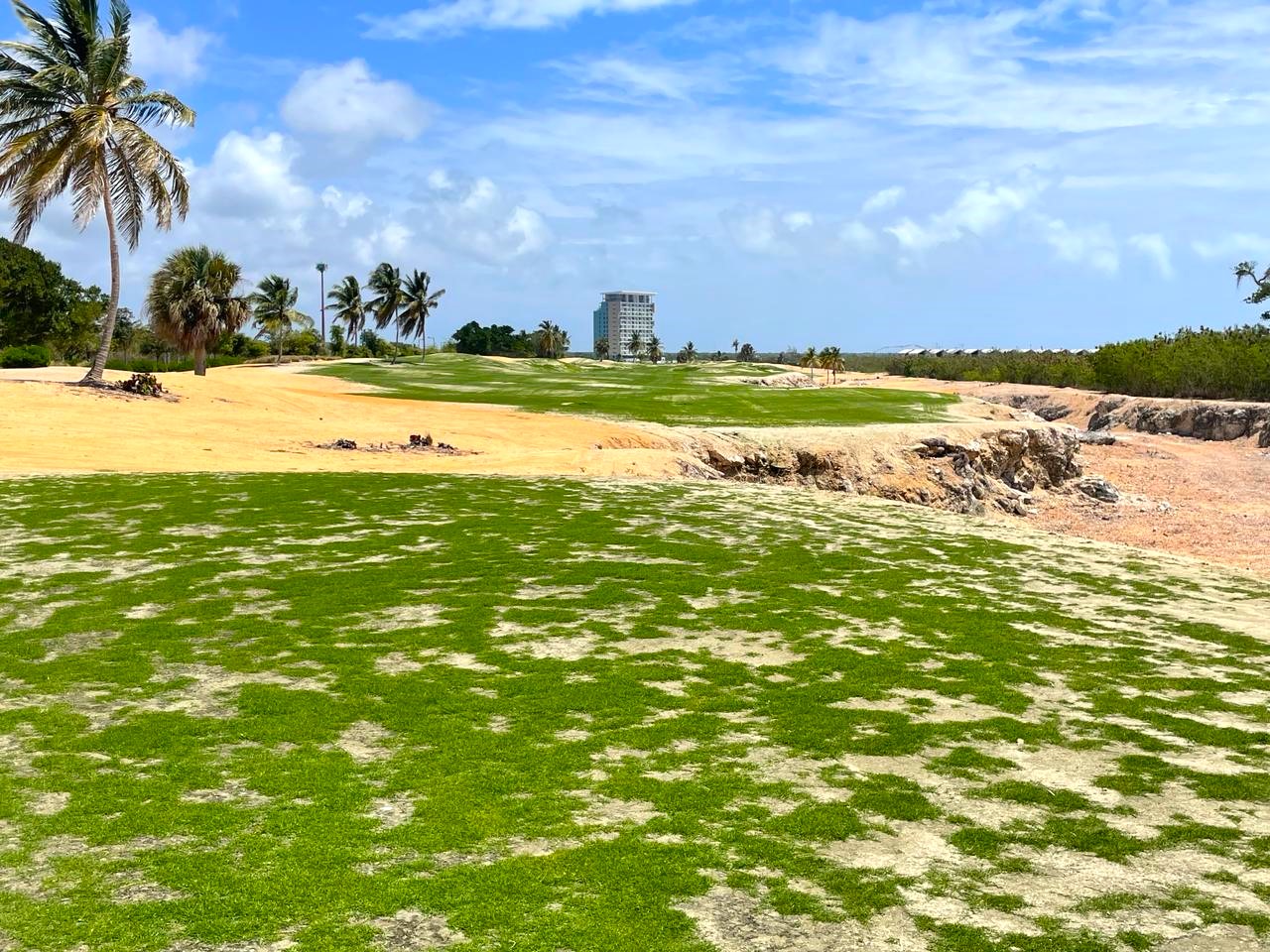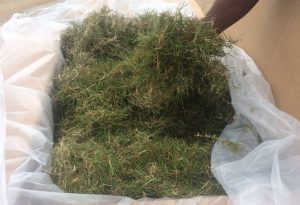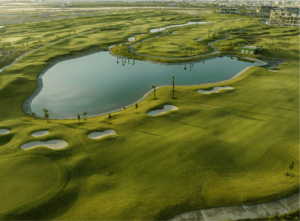All over the world, the crash of 2008 had a huge impact on the golf business. Wherever you go, there will be stories of courses that never happened because their backers ran out of money as a result of the financial implosion.
At the enormous Cap Cana development in the Dominican Republic the acclaimed Punta Espada course opened in 2006 and was to be followed by two more Nicklaus-designed courses. The first of those, Las Iguanas by name, was under construction and indeed had ten holes grassed when the global financial system hit the buffers and the developers abandoned the project. The holes were maintained for some time, but eventually allowed to go fallow.
In 2023, however, with golf around the world on a high, following the Covid-19 pandemic, which saw interest in the game reach levels unseen for many years, Las Iguanas was restarted. Nicklaus Senior Design Associate Troy MG Vincent, who worked on Punta Espada all those years ago, was appointed to complete the golf course.
“John Cope and I worked together on Punta Espada and John then started Las Iguanas,” Vincent says. “John then moved to Asia, so the course was turned over to Jim Lipe before it was mothballed. And now it is mine – there can’t be too many courses in the Nicklaus portfolio that have had three different lead architects!”
“This will be my fifth paspalum golf course, and I am a big fan.”
Troy Vincent, Senior Design Associate at Nicklaus Design
The ten holes of Las Iguanas that were grassed in the original build used an older strain of paspalum, and Vincent realized that a new variety of the same species would be the best choice now.
“This will be my fifth paspalum golf course, and I am a big fan,” he says. “Cap Cana has a large area of high ground that collects water, which is used to irrigate the development,” he says. “It is quite good quality, but in the Caribbean, you know it is only a matter of time before water quality issues surface and that made paspalum the only sensible choice for the golf course.”
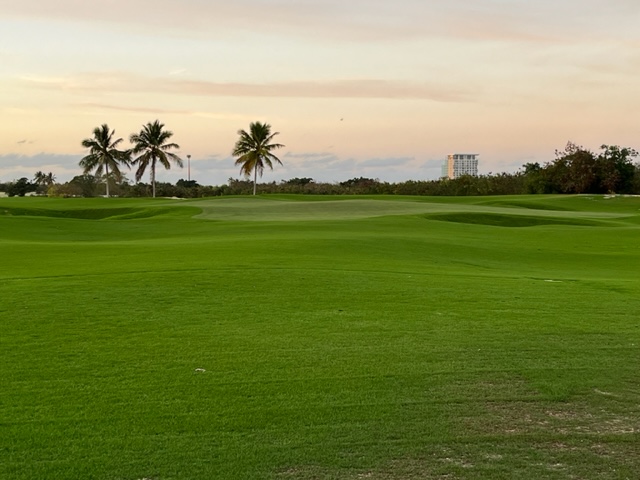
But most paspalum strains are vegetative and therefore ideally require an onsite turf nursery to generate enough material to grass a whole course.
“There was a nursery built originally, but it is long gone and indeed there was no trace of the original paspalum on the holes that were grassed,” says Vincent. “So it made sense to choose Pure Dynasty, which is the only seeded paspalum available. Essentially we have had to re-prep the entire golf course – in the intervening years, a lot of vegetation had grown in the play areas, including a ten foot tall tree in one green!”
Vincent says the choice of Pure Dynasty has been a good one.
“I have been really impressed with Pure Dynasty. It grew in incredibly well, including the slopes on the bunkers. We’re getting a better and quicker grow-in with the seed as against the sprigs.
Troy Vincent, Senior Design Associate at Nicklaus Design
“I have been really impressed with Pure Dynasty,” he says. “Although I have a fair amount of experience with paspalum, this is the first time I have used that variety. We grassed the short game area first, partly to serve as a nursery. It grew in incredibly well, including the slopes on the bunkers. We did some verticutting to get some sprigs to try on the faces of some of the bunkers of the golf course to compare with the seed and we’re getting a better and quicker grow-in with the seed as against the sprigs.
“We can only grow in a few holes at a time, because of water availability issues and we have currently grassed the first three holes, plus the eleventh. I should be able to approve three more holes for grassing on my next visit – we aim to grass nine holes this year, ready for a soft opening in October and I think we can beat that.”
